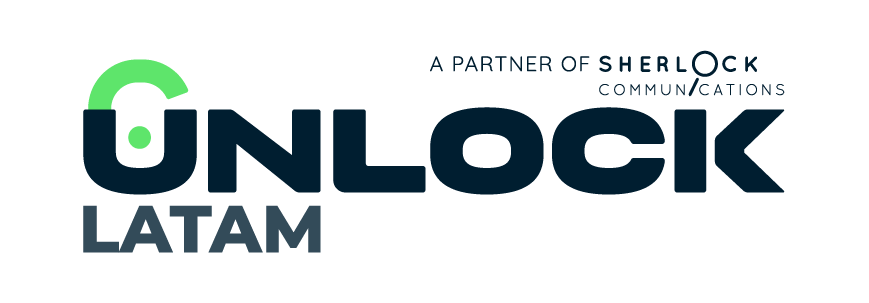Lead generation: what it is and how it works
When you start looking into ways to optimize the process of selling your products and services, you may come across words that seem hostile or too technical. But, behind those terms, there are powerful tools that you can use to benefit your business. For example, lead generation. What it is, how it works and why it can be a great ally to boost your growth.
Lead generation, also known as prospect generation, is the process of identifying and attracting individuals or companies interested in the products or services your company offers. That´s why it is usually a fundamental part of the marketing and sales strategies of many companies and generates very good results in B2B.
In B2B lead generation, strategies are deployed to attract potential clients and obtain quality personal data. The principle of lead generation is to generate future sales opportunities for services and products.
What is lead generation?
Lead generation is the process of generating interest in a product or service, with the goal of converting that interest into a sale. In online marketing, this typically involves collecting the contact information of a visitor (called a “lead”) through a web form.
In B2B companies, lead generation is a fundamental part of the sales funnel due to the type of business and the values that transactions usually involve.
Precisely, B2B demands sales processes in which the collection of information and the construction of a bond with new potential clients is key. Through different marketing instruments, you can surprise, educate and strengthen the relationship with consumers and users, increasing conversion opportunities.
Lead generation nurtures the link with potential clients, promoting and facilitating the sales process.
What are leads?
“Leads” are people or entities that have shown interest in what your company has to offer. This interest translates into different gestures or actions: from clicking on a web page they reached through a Google search (SEO) to answering a survey or completing a form with contact information.
You can capture more qualified leads with top lead generation services.
Lead generation is successful when it manages to initiate, build or deepen a link that allows the company to continue interacting with that “interested party” with the objective of converting them into customers.
One of the most interesting aspects of lead generation is that it has the potential to generate a longer and more lasting relationship with the client. That is, it goes beyond the specific and specific action of a first contact to establish a more powerful business relationship.
Even if you don’t make the purchase immediately, a good lead generation strategy creates the opportunity to return to that customer.
How lead generation works
When we talk about lead generation in the digital universe, we can distinguish two main stages of the process:
Attract customers/traffic to the company’s or brands’ site, networks or applications.
Convince potential clients we contact to share their contact information with us.
Generate leads, attract clients
The first step in the process is to find an effective way to interest and attract customers. Strategies can be very diverse, depending on the objectives and budget.
Strategies to get in touch: drive traffic to your site
- Search Engine Marketing (SEM): SEM is a form of online advertising that involves paying search engines (such as Google or Bing) to display ads in their first results.
- Search Engine Optimization (SEO): Similar to SEM in that it involves getting traffic from search engines, but instead of paying for ads, SEO involves generating content and optimizing your site so that the algorithms bless him with a good position in the ranking.
- Social networks: the importance of different social networks is variable and dynamic. The choice depends on many factors, ranging from the age of your customers to conversion goals.
- Advertisements: Advertising today can take different forms and rely on very diverse media, such as video, image, audio or text. It can be traditional or explore more integrated ways, such as branded content. These ads can be purchased from relevant websites to drive that traffic to your own site, usually through pay-per-click (PPC) models.
- Offline events: conferences, meetings, exhibitions and other types of events are ways to establish contacts with potential clients.
The process begins by attracting users to our website, whether through organic or paid channels.
From contact to client, from client to buyer
The second step is to convert that “visitor” into a potential client. It is usually done through an online form, a chat channel, an email, etc. There are different lead generation tactics aimed at stimulating interest and getting them to submit contact information. In general, what is called an incentive (known as a “lead magnet”) is used.
Some of the most effective marketing strategies for generating leads are:
- Content: generating relevant, quality content in exchange for contact information is a common practice in lead generation. Content marketing is a proven lead generation strategy for B2B businesses. With content marketing, your team develops and produces content that answers and resolves common questions from your audience. Anyone who perceives that they will receive something that adds value will be willing to provide their contact information.
- Talks and webinars: live video sessions, which allow visitors to participate, generate engagement and good conversion rates.
- Landing pages: when you have a good product or service to offer, a simple and optimized landing page in terms of loading and functionality is an excellent lead generation tool.
When your strategy works and you manage to convert the potential client into a qualified potential client (MQL), it is time to nurture that relationship with quality contacts: good content, education, loyalty with benefits and promotions, etc. In B2B business, there comes a time when the sales sector has the path paved enough to close the deal.
A B2B lead is an organization that is interested in a product or service provided by another company, and that intends to close a sale.
How to improve your lead generation
- Optimize your website to generate more leads. Avoid distractions, get focused, and make sure it’s easy to navigate.
- Generate more traffic to your site and/or to your social networks or other sales spaces.
- Increase and improve your content, incorporating different “calls to action” strategies, taking advantage of resources such as “A/B testing” to improve the effectiveness of your messages and increase conversion.
- A/B testing allows you to test different alternatives and favor those that have the best impact. It’s always better to make data-driven decisions about: Guts don’t count when we can have accurate information about what works and what doesn’t.
- Know your customers, listen to them, analyze their behavior. Show that you are attentive to their needs and interests, understanding what they value and enhance the offer of what is attractive to them.
- Work on the form: improve incentives and facilitate the process. Remember that something long or tedious to complete reduces feedback. And the same goes for requesting data that your client may consider too invasive. Design steps.
With more leads, the chances of closing more deals and increasing sales revenue increase. Additionally, lead generation boosts brand awareness: as a company, you can reach a broader audience and promote your brand. This helps establish your credibility and reputation in the market.
Mastering Outbound Sales: Strategies for Predictable Revenue Growth
Mastering Outbound Sales: Strategies for Predictable Revenue Growth Nobody said it better than Aaron Ross, author of Predictable Revenue: “You want growth that doesn’t require guessing, hope, and frantic last-minute...
The Role of Sales Development Representatives (SDRs) in Predictable Revenue
The Role of Sales Development Representatives (SDRs) in Predictable Revenue Sales Development Representatives (SDRs) play a crucial role in the implementation of the "Predictable Revenue" framework, initially conceptualized by Aaron...
B2B prospecting: finding high-quality leads
B2B prospecting: finding high-quality leads Although there are very common concepts among those of us who work in different areas of marketing, more than once we take for granted that...



